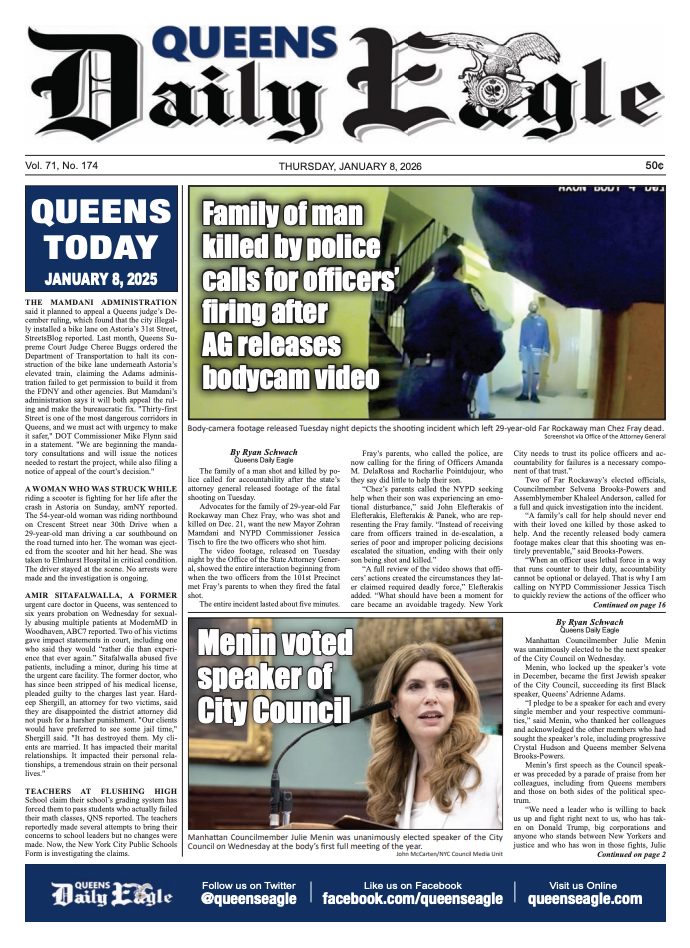Islander Neighbors, Old and New, Consider Belmont Park Project’s Impact
/American Pharoah races to Triple Crown victory in the 2015 Belmont Stakes in Belmont Park near the Queens border. The site could host a new stadium for the New York Islanders, along with a massive mall and hotel. Photo by Mike Lizzi.
Naeisha Rose
Large-scale projects can boost local economies by attracting visitors and even encouraging people to move in to the area. That’s part of the motivation for the $1 billion Belmont Park Redevelopment Project, a proposed plan to build a new arena for the New York Islanders alongside a massive mall and hotel.
But there’s a flipside: Rising property values lead to displacement, which means many of the people who live in the area prior to the development do not get to share in the benefits.
“A project of this size and this scope can greatly affect the quality of our community,” said Long Island Assemblymember Michealle Solages. “We want to know what is going to happen. What are the environmental impacts, what are the traffic impacts, what is the benefit to our community?”
Empire State Development (ESD), the quasi-governmental agency in charge of the project, points to jobs and revenue as a few of those benefits.
“The Belmont Redevelopment is an exciting opportunity for residents of both Long Island and Queens — bringing thousands of jobs, millions in tax dollars and a new home for the Islanders,” said ESD spokesperson Jack Sterne.
Large arena projects can contribute to rising property values, however. That’s a positive for many homeowners but a significant challenge for renters.
In Brooklyn, the price of condos and co-ops at Prospect Heights, Downtown Brooklyn, Fort Greene, Boerum Hill and Park Slope increased from $485,000 to more than $700,000 after the Barclays Center was built, according to CityRealty, a real estate firm. The current average sale price of a home in the area is $1.484 million, according to CityRealty.
The Barclays Center has served as the Islanders’ home ice since 2015 when the team moved from the aging Nassau Coliseum. This year, the team split home games between the two facilities.
The Brooklyn Chamber of Commerce has not yet considered what losing the franchise, and their 20 home games, might mean for vendors, a spokesperson said. But the Islanders never really caught on with locals — their core fanbase remains on the island and in Eastern Queens.
"It's clear the arena wasn't designed for hockey," said Eric McClure the founder of Park Slope Neighbors, a community organization near the Barclays Center. "The arena was not designed for hockey and it did not catch on with local folks. It has the worst attendance by a National Hockey League team by a fairly significant margin."
Though they are in first place in their division, the Islanders are averaging just 12,038 fans per game this season, according to a report by ESPN. That’s a little more than half the number of fans that the Chicago Blackhawks attract. Chicago leads the league in attendance with 23,131 spectators per game.
The average number of fans also lags behind other local teams. The last place New Jersey Devils, who play in Newark, attract 15,126 spectators per game. The Rangers average 17,337 per game.
During the 2014-2015 season, the last full season at the Nassau Coliseum, the Islanders averaged 15,334 spectators per game — roughly 3,300 more people than this season.
"Brooklyn for decades has been a New York Rangers territory too," McClure said. "There was not that automatic fan base to tap into."
Local businesses, like a sporting goods store near the Barclays Center that closed, did not benefit from the arena, but bars and restaurants did see an increase in customers, McClure said.
"The Islanders had a long-established fan base in Long Island, and some were willing to make the trip, and a fair number were not willing to do that," he said.
Mark Caserta, the executive director of the Fifth Avenue Business Improvement District, said the arena did not live up to expectations for many businesses, but has fueled the local restauarant industry.
"I think the Barclays Center drew new people to that area, but there was speculation on the part of property owners that there is more foot traffic than there actually is," Caserta said. "Some rents were higher than others, but despite the problems with the arena, some fans came out to support the local bars and restaurants … the bars closest to it were packed to the gills."
Few seem sad to see the Islanders return to Nassau County, however,
“There’s only one Brooklyn team for Barclays Center and that’s the Brooklyn Nets,” said Brooklyn Borough President Eric Adams “We wish the Islanders well on their journey to Belmont.”
This story is part two in a series about the Belmont Park Redevelopment Project.
Read Part 1




